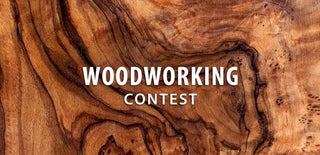Introduction: Live Edge CNC Chesapeake Bay
I started my journey into CNC with a small 6 inch by 6 inch engraver that I got off of ebay. What I realized is that the technology is absolutely scaleable-so I built one that will fit a piece of material that is 40 inches by 40 inches and 6 inches thick. That is a different instructable, but I attribute my success to a youtuber by the name "absorber of light". An amazing artist/creator.
So I built a monster CNC, but did not exactly know what I was going to do with it. That is until I found this huge double tree stump at the firewood pit. I struggled to get it in the truck, but I got it home and kept staring at it. Then it came to me, I will carve the Chesapeake Bay on it and fill it with resin.
Step 1: The Set Up...and Some Learning (the Hard Way)
I was trying to get as much of the height and detail out of the model that could. That was an EPIC fail, the other side of this log looks like a MESS.
I will go through the process, because if I had a little more patience and my machine was a little more professional I would do it again this way.
Step one was to take a picture of the material, because it was an unusual shape. Then I imported the photo into Fusion 360 and calibrated the size. Then I could outline it and have a shape and size that was fairly accurate. From the outline sketch, I could press/pull the material into the actual target for the milling. (photo 1)
Step two was to go to the website "terrain2stl" built by J Hatch. When I had the stl file, I imported that into Fusion and placed it whithin the solid that I created in step one.(photo 2/3)
The final step was to let the program create the CAM paths. (photo 4). If you zoom in, you will see the light blue lines that will show the path of the router bit.
When I exported the toolpaths, I opened them in easel and let it rip. Photo 5. Unfortunately I experienced a couple issues. The router that I had in the machine was an old junker and I had a straight flute bit. Neither of these were optimal and the bit would drift, dig in, and stall the machine. Unfortunately I tried it about 3 times, and failed. So I abandoned the detailed view and went with something a little more basic.
Step 2: Take 2- the Other Side of the Lumber.
I milled the second side flat-ish and downloaded a basic outline of the bay.
I went straight into easel and bypassed the Fusion work this time.
From the outline, I used easel to create a toolpath to "make a pocket" cut. This was done in a matter of seconds in easel, Much easier. I had the tool cut a pocket that was 1/2 inch deep, and had it cut with a 1/4 inch bit.
It took about 2 hours to carve. The attached videos show some of the progress. Amazing to watch it do its work.
Step 3: Finishing With Resin
When it finished, and cleaned off the sawdust, I could clearly see the outline. My son and I mixed up about 400 ml of resin and dropped in some blue dye. Then it was just a matter of pouring it into the pocket.
When the pour was done, a quick pass with the blowtorch got the bubbles out.
It is really quite stunning to look at, a big huge log with the bay right in the middle of it. I am going to have my son weld up a frame for it and we will put it out by the fire pit as a side table. I think that I will have to put a layer of clear epoxy on it so the weather doesn't ruin it.
First real CNC project but very satisfying...and educational.
Thanks for looking.
Attachments

Participated in the
Woodworking Contest












